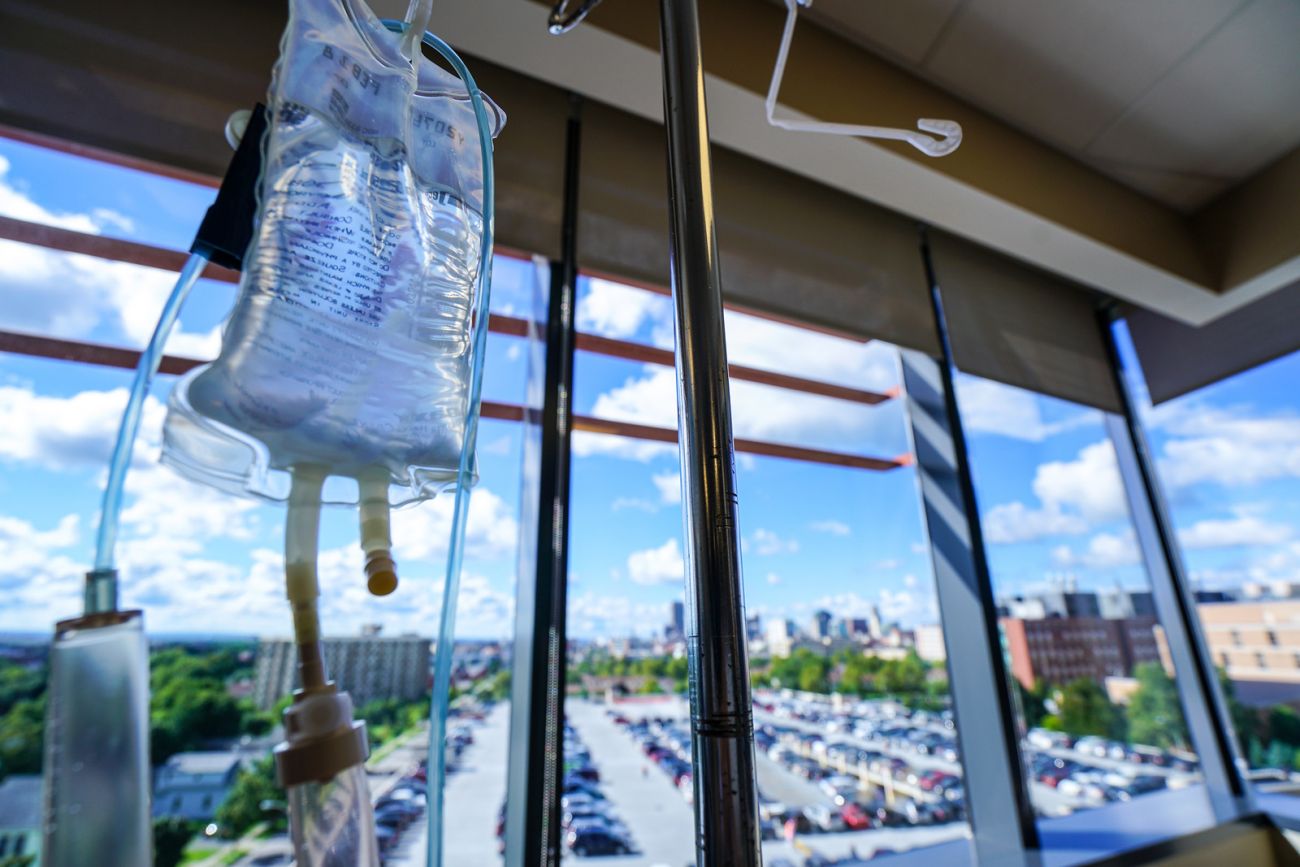About chemotherapy
Chemotherapy, or chemo, usually refers to the use of medicines or drugs to treat cancer. More than 100 chemotherapy agents are used to treat cancer, either alone or in combination with other drugs and treatments. Your care team will prescribe specific drugs, their dose, the number of treatments and duration of your therapy based on your individual circumstance—your cancer type and stage, and your health before treatment. You may get chemotherapy every day, week or month. Each treatment period will be followed by a rest period (no treatment) to allow your body to recover and build new healthy cells.
Getting infusion treatments
These treatments, including most chemotherapy and immunotherapy, deliver the drugs directly into your bloodstream through a vein in your hand or arm, or through a port, where a pump controls the drug’s infusion. Some chemotherapy drugs are injected under the skin. Chemotherapy and immunotherapy are often called systemic therapies because the drugs circulate through your whole body system.
Receiving your chemotherapy infusion
Chemotherapy infusion is usually done through an IV, where the drugs can be delivered directly into a vein – usually on the hand or lower arm. Please let the nurse know if you have any burning, redness or swelling at the IV site during your treatment. Depending on the type of cancer you have, the drugs you are receiving and the duration of your treatments, you may receive your chemotherapy through a catheter, port or pump:
Catheters are soft, thin tubes placed in a larger vein than those in your arm. The catheter remains in place between treatments avoiding the needle stick of starting a new IV. Blood (for testing) can also be removed through this catheter. Intrathecal catheters may be placed in your spinal canal to deliver drugs into the spinal fluid rather than the blood system. Intracavity catheters are placed directly into a cavity (hollow space) such as the chest, belly or pelvis for local delivery of the chemotherapy drugs and removed once therapy has been injected.
Ports are small, round discs placed under the skin to which a catheter can be attached during treatment sessions. Though you can feel it, if it is properly placed and kept clean, there should be no discomfort. A port is removed when chemotherapy is completed.
Pumps control how fast the drugs are delivered into your system. External pumps are portable so you can move about during treatment. Internal pumps can be surgically implanted under the skin and have a reservoir in which to place the chemotherapy agent which they will release on a timed basis.
Length of treatment
Administration of chemotherapy can take anywhere from 30 minutes to 10 hours, depending on the treatment protocol, dose, and how it is administered. Those that require more than 10 hours are usually done in an In-patient facility. Ask your doctor prior to your first treatment how long they expect it will take. For the remaining treatments, you can check with the hospital staff.
Medications
Make a list of all the medications and doses you are currently taking and bring it with you to all of your appointments. If another doctor prescribes medication while you are receiving chemotherapy treatments, make sure he or she knows what chemotherapy you are receiving and when. Also, keep your doctor informed of any drug you take – both prescription and over-the counter medications.
Some medications, including vitamins and herbal supplements may affect your chemotherapy. Please ask your physician what you may or may not take during your chemotherapy.

